Who is here? 1 guest(s)
|
Tachinidae?
|
|
| Carnota |
Posted on 13-01-2007 23:31
|
|
Member Location: Posts: 170 Joined: 29.05.06 |
Please, a Tachinidae? In Quercus petraea forest. Near Ourense, NW Spain. 3-november-2006. Size 12 mm. Greetings |
|
|
|
| Carnota |
Posted on 13-01-2007 23:33
|
|
Member Location: Posts: 170 Joined: 29.05.06 |
Another view |
|
|
|
| Carnota |
Posted on 13-01-2007 23:34
|
|
Member Location: Posts: 170 Joined: 29.05.06 |
Another view |
|
|
|
| Carnota |
Posted on 13-01-2007 23:36
|
|
Member Location: Posts: 170 Joined: 29.05.06 |
Another view |
|
|
|
| Carnota |
Posted on 13-01-2007 23:37
|
|
Member Location: Posts: 170 Joined: 29.05.06 |
Another view |
|
|
|
| Carnota |
Posted on 13-01-2007 23:37
|
|
Member Location: Posts: 170 Joined: 29.05.06 |
Last view |
|
|
|
| Carnota |
Posted on 15-01-2007 15:08
|
|
Member Location: Posts: 170 Joined: 29.05.06 |
Could be Clairvillia sp.? Greetings! |
|
|
|
| ChrisR |
Posted on 15-01-2007 15:19
|
|
Administrator Location: Posts: 7699 Joined: 12.07.04 |
Looks more like Linnaemya rossica or tessellans to me - but I don't see either very often here in the UK  Maybe Theo can help? Costal cell appears to only have 50% with hairs but there do appear to be strong bristles on the gena, so I am a bit confused. But certainly it looks like Linnaemya (hairy eyes, parafacial without many bristles, facial ridges without many bristles, protruding mouth edge, yellow basicosta etc etc) Nice photos, by the way Maybe Theo can help? Costal cell appears to only have 50% with hairs but there do appear to be strong bristles on the gena, so I am a bit confused. But certainly it looks like Linnaemya (hairy eyes, parafacial without many bristles, facial ridges without many bristles, protruding mouth edge, yellow basicosta etc etc) Nice photos, by the way  |
|
|
|
| Carnota |
Posted on 17-01-2007 09:36
|
|
Member Location: Posts: 170 Joined: 29.05.06 |
Thank you for your help, Chris. I was a bit confused about Linnaemya, in the Central Europe Tachinidae keys of Tschorsnig and Herting figures Sides of the thorax with yellow hairs for this genus. Probably the photos do not show these hairs. In the Portugal+Spain checklist of Carles-Tolr?(2002) Cat?logo de los Diptera de Espa?a, Portugal y Andorra, the following Linnaemya are included: L. comta, L. fissiglobula, L. helvetica, L. impudica, L. lithosiophaga, L. media, L. picta, L. soror, L. tessellans, L. vulpina. |
|
|
|
| Susan R Walter |
Posted on 17-01-2007 09:44
|
|
Member Location: Posts: 1794 Joined: 14.01.06 |
Carnota I think it does have yellow hairs on the sides of the thorax - pale ones, anyway. The bristles are black, but there is also quite a profusion of finer pale hairs in the fourth image. It may be a trick of the light though - in the second image the hairs do look black. What does it look like in real life under magnification? Susan |
|
|
|
| ChrisR |
Posted on 17-01-2007 14:12
|
|
Administrator Location: Posts: 7699 Joined: 12.07.04 |
I must admit I can't see yellow hairs clearly, and like Susan said, it might be a trick of the light. The Central European key won't be 100% guaranteed to help because it doesn't work so well south of the Pyrennes or Alps.  Remember, on the subject of yellow hairs it might be that feature only works for species in the Central/Northern European region and there could be Linnaemya spp. outside that area that don't have yellow hairs. But you'd have to ask Peter Tschorsnig about that - he does do some work in the south and he'd have a clearer idea about the fauna in your area. Remember, on the subject of yellow hairs it might be that feature only works for species in the Central/Northern European region and there could be Linnaemya spp. outside that area that don't have yellow hairs. But you'd have to ask Peter Tschorsnig about that - he does do some work in the south and he'd have a clearer idea about the fauna in your area.One thing for sure, it certainly isn't a Clairvillia spp. (have a look here: http://www.dipter...oto_id=249). So, I'd say you should use the Central European key as best you can and see which Linnaemya spp. it comes out to... but don't be 100% confident on the identification until you can find literature that specifically covers your part of Europe 
Edited by ChrisR on 17-01-2007 14:15 |
|
|
|
| Carnota |
Posted on 17-01-2007 17:17
|
|
Member Location: Posts: 170 Joined: 29.05.06 |
Chris, I think that you are right. Thanks for your posts.  My literature are very limited, my main difficulty in this order. Susan, thanks.  Anyway here are some more detailed photos, in case it can help. Best wishes. |
|
|
|
| Carnota |
Posted on 17-01-2007 17:27
|
|
Member Location: Posts: 170 Joined: 29.05.06 |
First |
|
|
|
| Carnota |
Posted on 17-01-2007 17:28
|
|
Member Location: Posts: 170 Joined: 29.05.06 |
Second |
|
|
|
| Carnota |
Posted on 17-01-2007 17:28
|
|
Member Location: Posts: 170 Joined: 29.05.06 |
Third |
|
|
|
| Carnota |
Posted on 17-01-2007 17:30
|
|
Member Location: Posts: 170 Joined: 29.05.06 |
And antenna |
|
|
|
| Zeegers |
Posted on 19-01-2007 17:04
|
|
Member Location: Posts: 18446 Joined: 21.07.04 |
Hi Carnota thanks for all your efforts. However, some thing are just impossible. And IDing a female Linnaemyia from pictures, is, for most species, on of them. Unfortunately. Theo Zeegers |
|
|
|
| Carnota |
Posted on 19-01-2007 22:07
|
|
Member Location: Posts: 170 Joined: 29.05.06 |
Thank you, Theo  All you are of great help. Reching the genus level in this case is great for me. |
|
|
|
| Jump to Forum: |


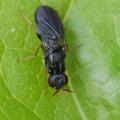



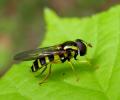
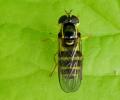

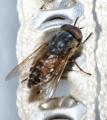
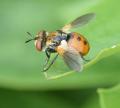



 but don't see the image in the post.
but don't see the image in the post.